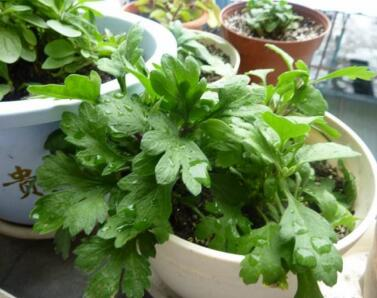Planting conditions of Coptis chinensis
Coptis chinensis is one of the valuable medicinal materials, and we are quite familiar with its name. Coptis chinensis has developed well in recent years, and the planting benefits are better. But Coptis chinensis is a shady plant at high altitude, which requires a higher planting environment, so what conditions do you need to grow Coptis chinensis? Let's take a look.

1. Altitude requirements
Coptis chinensis is mostly distributed in the mountains about 1200-1800 meters above sea level, of which 1400-1700 meters above sea level is suitable for cultivation, while in the environment of about 1800 meters above sea level, the climate is cold, the growth period of Coptis chinensis is short, although there are few slow seeds, but the rhizome is solid and the quality is better. In the mountain environment below 1000 meters above sea level, the temperature is higher. Although Coptis chinensis grows fast and often has luxuriant stems and leaves, it is not full of roots and stems, poor quality, and is vulnerable to diseases and insect pests.
2. Temperature requirement
Coptis chinensis has strong cold resistance, likes cold and cold climate, and is not resistant to high temperature and hot climate. its leaves can become evergreen in frost and snow environment. It can withstand the low temperature of minus 10 degrees, the leaves can be evergreen at minus 6 degrees, and the plants are dormant at minus 5 degrees. Above 50 degrees, the plants begin to germinate new leaves. At 10 degrees, the new leaves grow very fast, but when the temperature is higher than 25 degrees, the new leaves grow slowly.
3. Lighting requirements
Coptis chinensis is a shade plant, avoid strong light, like weak light and scattered light environment, so it is necessary to do a good shading treatment when planting, you can also choose the way of cultivation under the forest. Coptis chinensis's demand for light increases with the growth year, and generally requires a shade degree of about 60%. At the initial stage of growth, the greater the shade degree, the more conducive to seedling growth, and when the plant enters the underground tuber to expand, it is necessary to uncover the shelter to restrict the growth of aboveground stems and leaves, which is the transfer of nutrients to the rhizome.
4. Soil requirements
Coptis chinensis is suitable for growing in sandy loam with deep soil layer, loose and fertile soil and rich humus, and is mostly cultivated in green broad-leaved forest and coniferous and broad-leaved mixed forest. Most of the soils in these areas are rich in humus of organic matter, rich in potassium and nitrogen, and have high water content, and all of them are goose slightly acidic soils with pH values between 5.56.5.
The above is the introduction of the planting conditions of Coptis chinensis. I hope it can help you. If you want to know more about it, please follow us.
- Prev

Control methods of diseases and insect pests in Coptis chinensis
Control methods of diseases and insect pests in Coptis chinensis
- Next

Cutting methods of Hibiscus hibiscus
1. Branch selection of hibiscus: first of all, when selecting branches of hibiscus for cutting, we must choose appropriate branches, try our best to use the mother plant with strong growth and no diseases and insect pests, and cut off the branches on the outside of the plant. it is best to select branches that are luxuriant and healthy, so as to facilitate the success of cutting.
Related
- Fuxing push coffee new agricultural production and marketing class: lack of small-scale processing plants
- Jujube rice field leisure farm deep ploughing Yilan for five years to create a space for organic food and play
- Nongyu Farm-A trial of organic papaya for brave women with advanced technology
- Four points for attention in the prevention and control of diseases and insect pests of edible fungi
- How to add nutrient solution to Edible Fungi
- Is there any good way to control edible fungus mites?
- Open Inoculation Technology of Edible Fungi
- Is there any clever way to use fertilizer for edible fungus in winter?
- What agents are used to kill the pathogens of edible fungi in the mushroom shed?
- Rapid drying of Edible Fungi

